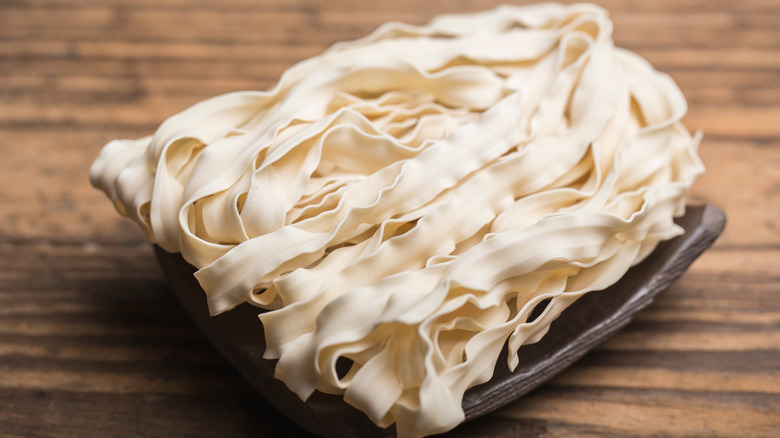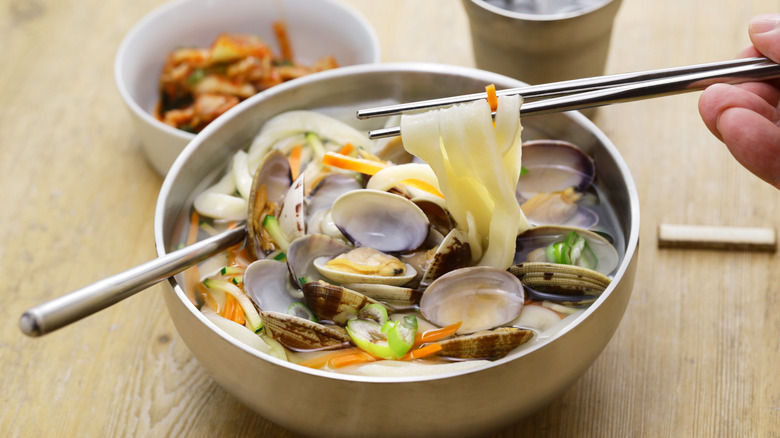What Are Knife-Cut Noodles And How Are They Different From Ramen?
We may receive a commission on purchases made from links.
Maybe you have seen packages of Trader Joe's knife-cut noodles on shelves and wondered what the difference is between these packages and your favorite ramen noodle recipes. Whether you're looking to spruce up your instant ramen or are planning to make noodles from scratch, you should know that there are a few key variations between knife-cut noodles and ramen, beyond the names printed on a label.
As described, knife-cut noodles are made by slicing off pieces of a block of dough directly into a vat of boiling water. These noodles can also be called knife-shaved, pared, or peel noodles. The uneven shapes can be dense and chewy in the center of the pieces, and the edges form small ribbon-like grooves from the cuts. Experienced master chefs can slice off hundreds of noodles in one minute, swiping the doughy blocks so quickly it looks like a magic trick. Traditionally-made batches of knife-cut noodles aren't necessarily uniform in appearance, and that's part of the added appeal. Something is charming about the range of shapes and sizes in a bowl, yet the chewy consistency of each piece offers a reliably gummy middle with a softened edge that is satisfying to bite into.
When an ingredient makes the difference
Though some may be quick to name dried noodles as ramen, knife-cut noodle pieces are not, in fact, ramen. Ramen noodles by definition contain alkali, often present in the form of kansui powder or a potassium carbonate and sodium carbonate powder mix that adds a yellow hue to the noodles and also helps impart stretchiness to the noodles.
Some of the highest-quality recipes used to make knife-cut noodles are made from high-gluten flour, offering exceptionally chewy noodles with a toothy bite. These noodles can be slightly sweet with a subtle whisper of wheat flavor that can lend well to other recipes. Though the batches sold at Trader Joe's aren't made by hand, a rotating knife mimics the same patterns of movement that a chef might make. The pieces are air-dried — not deep-fried like ramen — for the better part of a day, ready for you to bring them back to life in your kitchen with boiling soup or water. Should you want to make these noodles for yourself at home, borrow inspiration from noodle shops and customize dishes with toppings and sauces, or enjoy soup recipes like kalguksu packed generously with knife-cut noodles.

